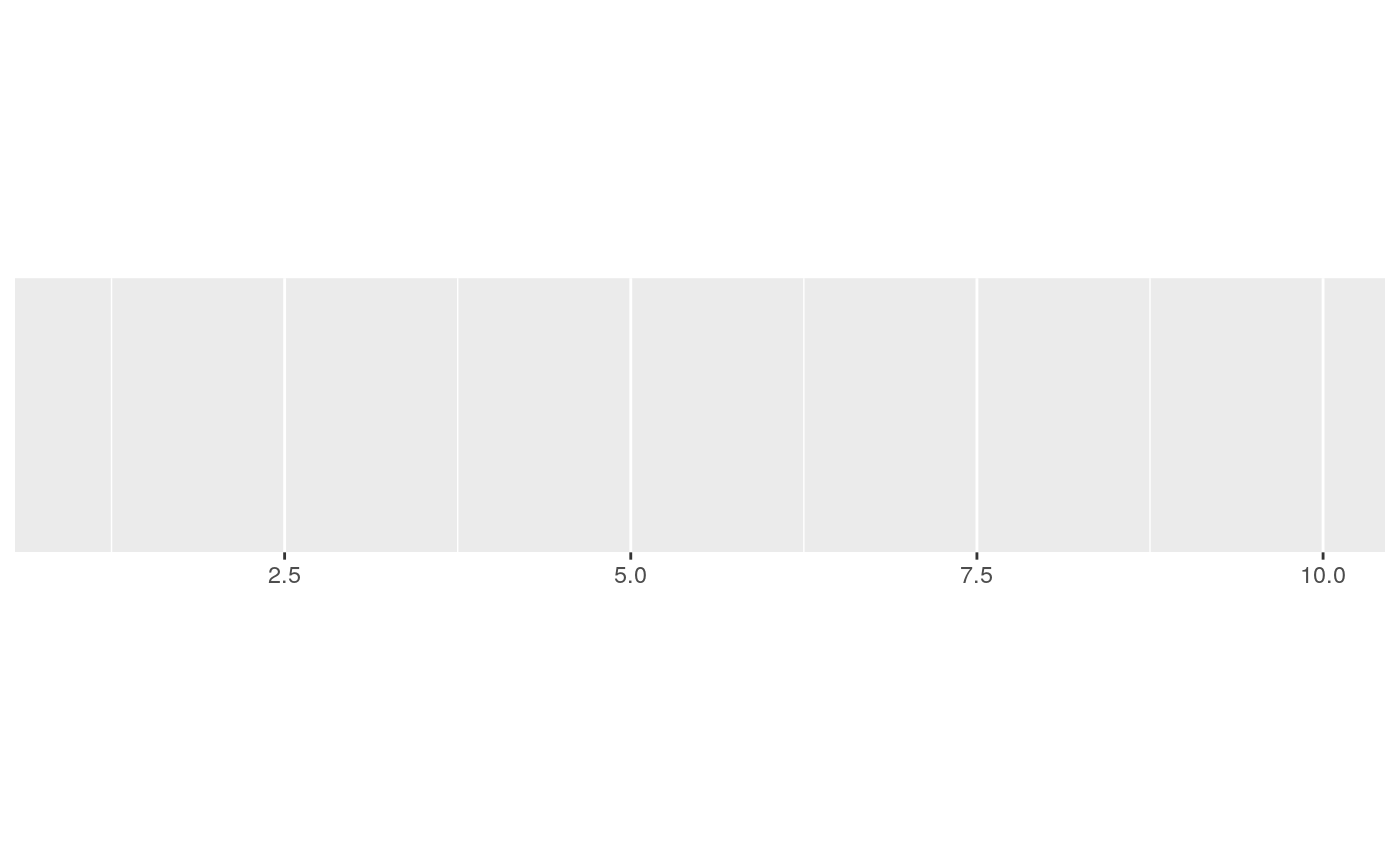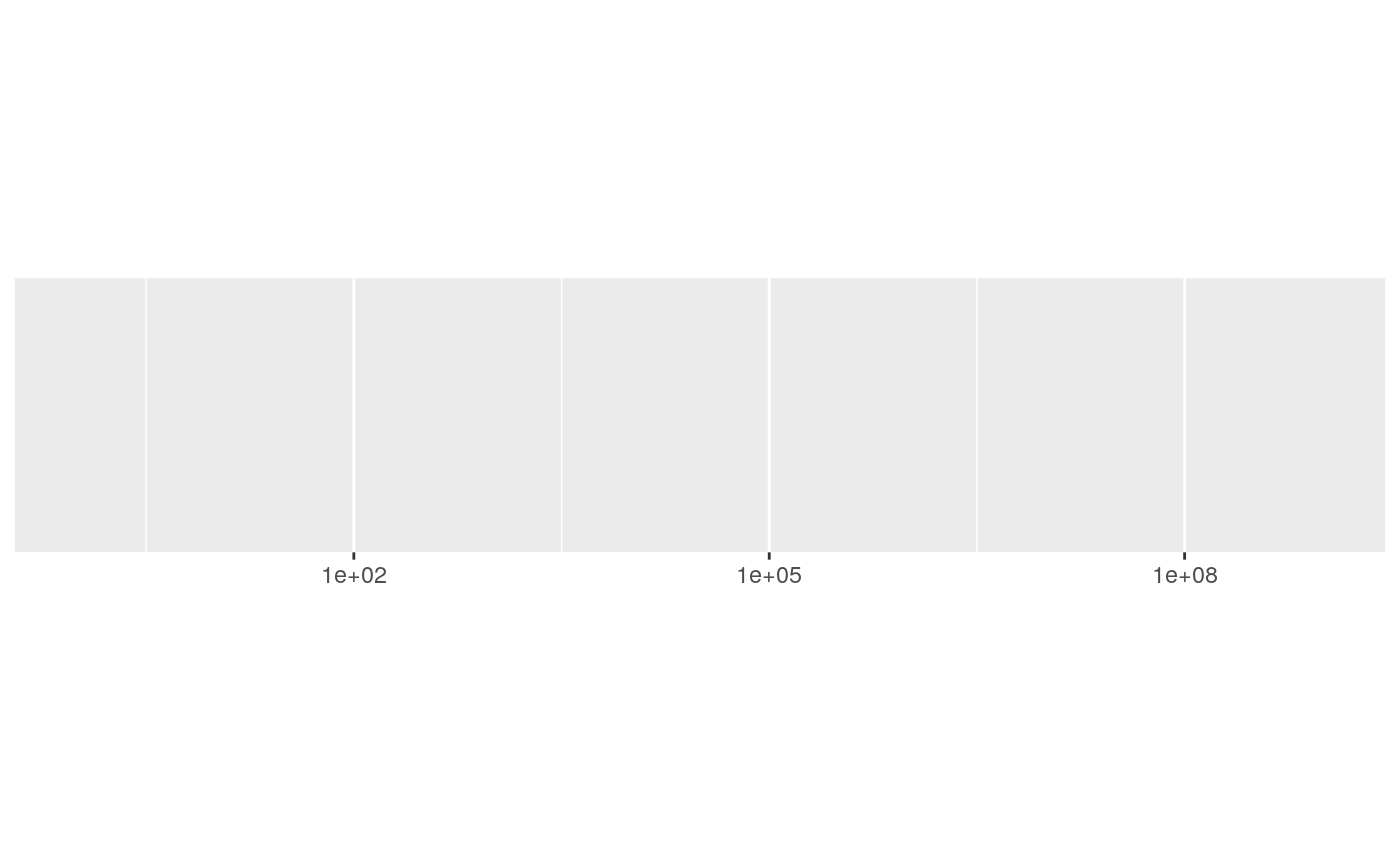Label numbers with scientific notation (e.g. 1e05, 1.5e-02)
Source:R/label-scientific.R
label_scientific.RdLabel numbers with scientific notation (e.g. 1e05, 1.5e-02)
label_scientific( digits = 3, scale = 1, prefix = "", suffix = "", decimal.mark = ".", trim = TRUE, ... ) scientific_format( digits = 3, scale = 1, prefix = "", suffix = "", decimal.mark = ".", trim = TRUE, ... ) scientific( x, digits = 3, scale = 1, prefix = "", suffix = "", decimal.mark = ".", trim = TRUE, ... )
Arguments
| digits | Number of digits to show before exponent. |
|---|---|
| scale | A scaling factor: |
| prefix, suffix | Symbols to display before and after value. |
| decimal.mark | The character to be used to indicate the numeric decimal point. |
| trim | Logical, if |
| ... | Other arguments passed on to |
| x | A numeric vector to format. |
Value
All label_() functions return a "labelling" function, i.e. a function that
takes a vector x and returns a character vector of length(x) giving a
label for each input value.
Labelling functions are designed to be used with the labels argument of
ggplot2 scales. The examples demonstrate their use with x scales, but
they work similarly for all scales, including those that generate legends
rather than axes.
Old interface
scientific_format() and scientific() are retired; please use
label_scientific().
See also
Other labels for continuous scales:
label_bytes(),
label_dollar(),
label_number_auto(),
label_number_si(),
label_ordinal(),
label_parse(),
label_percent(),
label_pvalue()
Other labels for log scales:
label_bytes(),
label_number_si()
Examples
#> scale_x_continuous()#> scale_x_continuous(labels = label_scientific())#> scale_x_continuous(labels = label_scientific(digits = 3))#> scale_x_log10()



